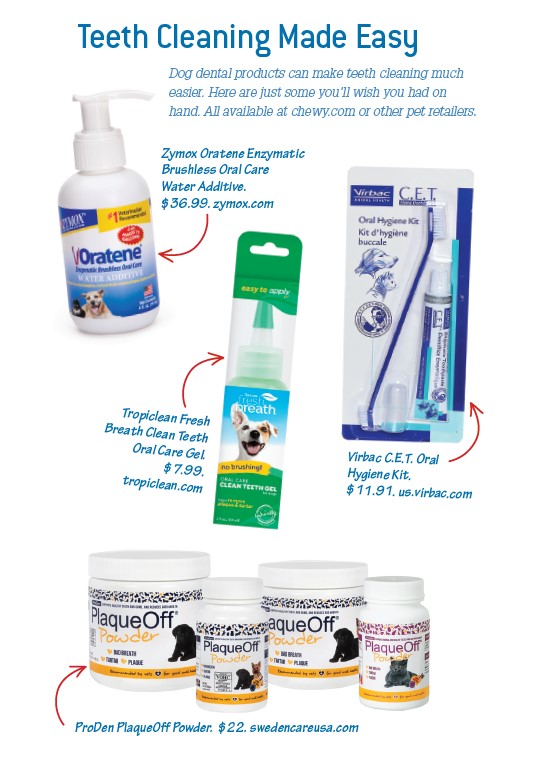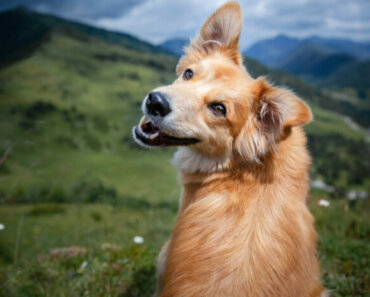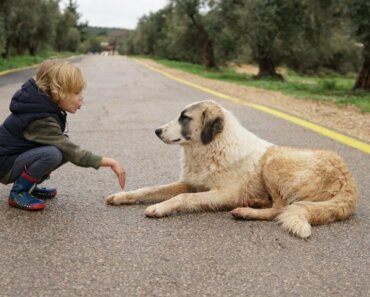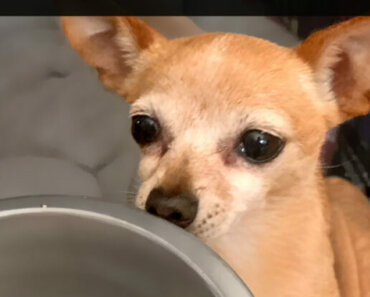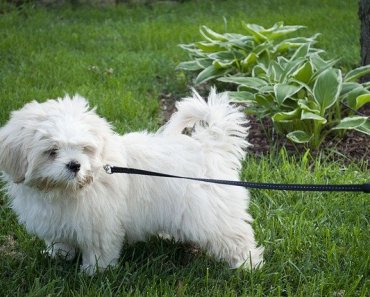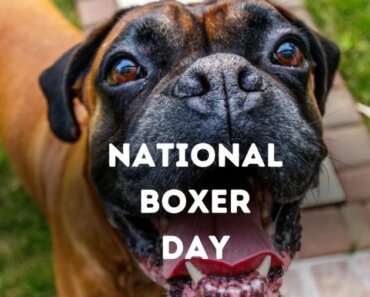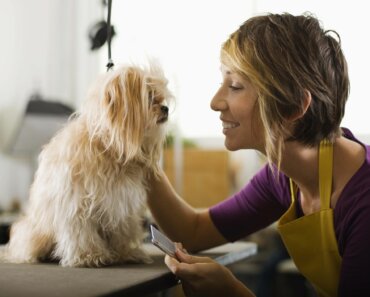Keeping our dogs healthy does require performing some unflattering tasks — like daily poop patrol in the backyard and the often-avoided regular brushing of teeth. It’s time to step up the dental care of our dogs — for the sake of their health and for maintaining the size of your wallet. Win-win, right?
With the help of two leading veterinary dentists — Dr. Debra Nossaman and Dr. Ben Colmery III — Dogster identified key dental issues facing dogs of all ages and sizes. “Dogs can be so good at hiding pain, so that by the time a person realizes something is wrong with their dog, the problem may be advanced,” says Dr. Nossaman, a board-certified veterinary dentist and co-founder of the Dallas Veterinary Dentistry and Oral Surgery in Texas.
Dr. Colmery, a board-certified veterinary dentist who co-founded the American Veterinary Dental Society and who owns the Dixboro Veterinary Dental clinic in Ann Arbor, Michigan, adds, “When we can find the issue in the mouth and fix it, the dog has a new lease on life.” Here’s the rundown on the top dental issues and how to deal with them:
Red Swollen Gums
As a rule, healthy gums should be bubblegum pink, but they can also have pigmentation that’s black or sports black spots. But swollen, red and painful gums signal gingivitis, a condition caused by a buildup of bacteria and tartar on the teeth.
The solution calls for a veterinarian to take dental X-rays, study them and then conduct a thorough teeth cleaning while your dog is under anesthesia.
“We have made quantum leaps in the improvement of anesthesia and sedation in veterinary dentistry,” says Dr. Colmery. “Giving pain medication before, during and after dental procedures has been shown to speed recovery and lessen the level of general anesthesia.”
Dr. Nossaman adds, “When you can see the rim next to the teeth get red and inflamed, that is gingivitis and the teeth need to be professionally cleaned. Don’t wait for severe gingivitis to occur, because your dog will be at risk for bone loss or painful, periodontal pockets.”
Tartar Buildup & Yellowing Teeth
Your dog can avoid this condition if you brush his teeth daily or at least weekly. You do not always have to wrestle your dog to pry open his mouth and then wiggle in a toothpaste-coated toothbrush to reach the back molars.
You can just wrap a washcloth with dog-safe tooth-paste around your index finger and rub inside the cheek surfaces on both sides to remove the scum off the out-side of the teeth. And then reward your dog with a treat.
Dentists casually call this the “flip the lip” procedure.
“Make this a happy event,” Dr. Nossaman says. “Don’t try to pry the mouth open. Dogs have five muscle groups working to try to close the mouth; expect them to wiggle and resist. By rubbing inside the cheeks, you can remove about 80% of what you need to remove and let the dog’s tongue take the toothpaste to work on the inside.”
Dreaded Doggie Breath
Turning your head and holding your breath may be your go-to choice, but that action doesn’t help your dog. Instead, be a pet detective and report what you see inside your dog’s mouth, and describe the yucky odor to your veterinarian pronto.
“More than 400 types of bacteria have been identified in the oral cavities of companion animals,” Dr. Colmery says. “That odor comes from two main places: something wrong inside the mouth or something wrong inside the GI (gastrointestinal tract).
”Your dog’s foul breath will not disappear on its own.
“Bad breath is a sign of poor oral health and should be addressed promptly,” Dr. Nossaman says. Talk with your veterinarian about your dog’s diet, and consider adding good bacteria in the form of probiotics.
Broken Teeth
Dogs have reputations for being chewers. What you select for them to chomp on may be the difference between intact teeth and broken teeth.
“Do the knee test,” Dr. Colmery suggests. “If you hit your dog’s chew against your knee and it hurts, it is not a good idea to give to your dog to chew on. Chews should be pliable and have some give. When the chew is too hard, it does not give, and the chewing action between the upper and lower molars can cause broken teeth.”
A telltale clue something is seriously wrong is if you notice your dog is suddenly chewing food on one side of his mouth, Dr. Nossaman adds.
“If the pulp of the broken tooth is exposed, you might see blood,” she says. “If your dog is dropping pieces of kibble at mealtime or not playing with his toys or engaging you in tug-of-war, he may be dealing with a broken tooth issue.”
Depending on the situation, the tooth will need to be surgically removed or fitted with a metal crown.
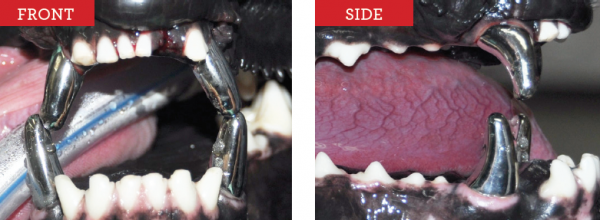
Metal Crowns – Front and Side View.
Overcrowded Teeth
Dogs, no matter the size, should sport 42 adult teeth. But small breeds with smaller jaws face more issues with teeth crowding together. Dogs with pushed-in faces, like Pugs, Bulldogs and Shih Tzu, often need to have some teeth removed to maintain a healthy bite.
“Especially with small dogs, crowding requires us to identify which teeth are important and which teeth we can say bye-bye to and remove,” Dr. Colmery says.
Fractured Jaw
“Unfortunately, we see this far too often in which a big dog crushes a little dog’s jaw in a fight,” Dr. Nossaman says. “Or a dog will get kicked in the face by a horse or get his head caught in a gate.”
Repair calls for surgery to wire the jaw in place to give it time to heal. “Fortunately, a dog’s jaw does not need metal plates and it is pretty forgiving.” she says.
Oral Mass
Regularly looking inside your dog’s mouth can help you spot an over-growth of gum tissue, better known as an oral mass or oral tumor. Tumors can be both benign or cancerous and can develop slowly or quickly, Dr. Colmery says.
Oral masses can also indicate that your dog is dealing with health issues beyond the mouth, such as diabetes or kidney disease.
Retained Baby Teeth
“The general rule is that no two teeth should occupy the same space at the same time,” Dr. Nossaman says. “Unaddressed, it can impact the dog’s bite and cause movement of the teeth.”
Another concern: Baby teeth can cause infection that will impact the ability of the adult tooth to poke through the gumline and take its designated position in the mouth.
Surgical removal of the stubborn baby teeth may be necessary.
Tooth Crowns
Due to having some pointy teeth, dogs rarely develop cavities. However, any tooth — in a person or a dog — can chip. Most of the cases requiring the fitting of metal crowns on dogs tend to involve police dogs or military dogs.
“We do metal crown work on dogs who need to do bite work,” Dr. Nossaman says. “The crown does not make the tooth stronger, but it does offer some tooth protection.”
But sometimes veterinary dentists insert cast metal alloy crowns to repair fractured or damaged teeth. These crowns are purposely placed just above the gumline to help maintain good oral hygiene.
